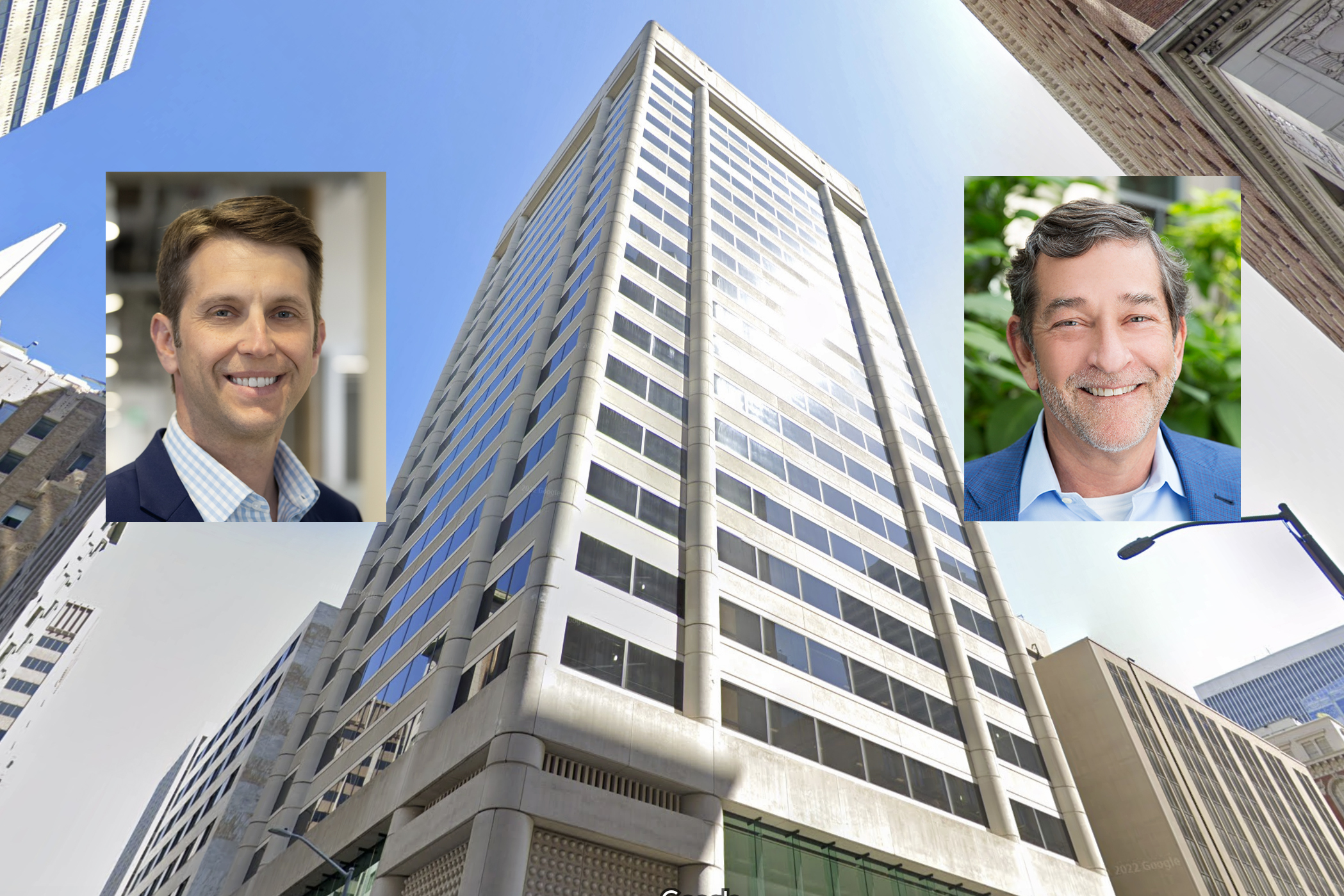It’s not often that a single office tower trading hands in Downtown San Francisco garners as much attention as 350 California St. A typical passerby probably wouldn’t think twice about the property, which is neither the largest nor the most expensive nor the newest building in the Financial District.
But amid record vacancy rates in San Francisco, 350 California has basically served as a 22-story, bright-red reset button for the city’s commercial real estate values.
San Francisco real estate developers SKS Partners and the Swig Company partnered to purchase the 300,000-square-foot property for around $61 million, equivalent to around $205 a square foot. That’s a roughly 75% haircut from the price that seller MUFG Union Bank shopped the property for in 2020.
Paul Stein, a managing partner at SKS Partners, said he thinks of the purchase as a bet on history and the self-perpetuating ecosystem of top-tier universities, venture capital funding and tech talent that undergirds San Francisco’s economy.
It’s also a bet on location. California Street has historically functioned as a premier thoroughfare in San Francisco’s business district, though it may have recently lost a bit of its luster amid a broader office market reboot.
The record vacancy rate in San Francisco increased to 33.6% in the third quarter, amounting to some 30 million square feet of vacant space, according to preliminary data from real estate firm CBRE.
Uncertainty about San Francisco’s trajectory, along with interest rate hikes that massively raised borrowing costs, largely froze the market for building sales in the past year. Another problem, according to city economist Ted Egan, was “a lack of price discovery” in the market: Essentially, the lack of data points made it difficult to figure out a fair market price for properties.
“It’s like going into a cold lake and seeing who’s going to jump in first,” Stein said. “Once somebody jumps in, they all do.”
SKS and Swig decided to take the plunge. With the official sales of buildings like 350 California St., 60 Spear St., 180 Howard St. and 550 California St., the picture is much clearer. Now the question turns to: Who’s poised to take advantage?
Swig Company CEO and President Connor Kidd said investment firms with strong balance sheets and war chests of cash are in a good position to snap up Downtown properties. This class of buyers is starting to come off the sidelines now that a market-clearing price has been more firmly established. Stein and Kidd predict that the volume of buyers will start to drive up prices.
Case in point: Real estate sources said there were more than a dozen active bidders on the North Park office complex in Jackson Square, with pricing down more than 60% from the $245 million the property sold for in 2018.
“I think you’re starting to see that broad reset, and we’re hoping to have a bit of a head start,” Kidd said.
Many building owners were working on a “delay and pray” strategy pushing off major refinancing or financial decisions with the hope that the market would rebound back to its peak. But the dam has started to break.
The Swig Company was a relatively late addition to the 350 California deal. Originally, SKS was working with a South Korean investor, who ultimately withdrew from the transaction. Soon afterward, during an event at the University of California Berkeley’s Fisher Center, Stein ran into former Swig CEO Jim Carbone, who raised the possibility of coming together to buy the property.
With a new partner that also shared a long-term view on San Francisco came a shift in strategy. Rather than a short-term play, Kidd said the plan is to hold the property for a decade or more.
Although the building is mostly vacant—and a few floors are not built out—one of the attractive characteristics of the property is the fact that it was “immaculately maintained,” Stein said.
Kidd said the current plan is to lease out available space at attractive costs made possible by the discount the buyers received on the building. When rents over time rise to match costs, the focus will shift to improving the unutilized space.
“Obviously, you’re having a reset in [costs] such as ours, where we can be more competitive, so the market clearing price right now is at a lower number than it was before,” Kidd said.
Stein positioned the real estate reset as painful in the short term—particularly on city revenues—but believes a healthier real estate market will be a result. The surge in values and rents from the last tech boom led to a situation where many types of businesses were priced out.
“When we were leasing our last building, I was scared to death because it was way too good to be true,” Stein said. “It was way too long without any disruption in the marketplace.”
As for the “doom loop” that has seemingly dominated the conversation locally, Stein’s solution to keeping a longer-term view on the viability of San Francisco starts with hopping on his bicycle.
“I ride my mountain bike up to the top of Mount Tam and look around and go, ‘It’s gonna be fine,’” Stein said. “But every once in a while, you’ve got to roll up your sleeves and get some work done.”
